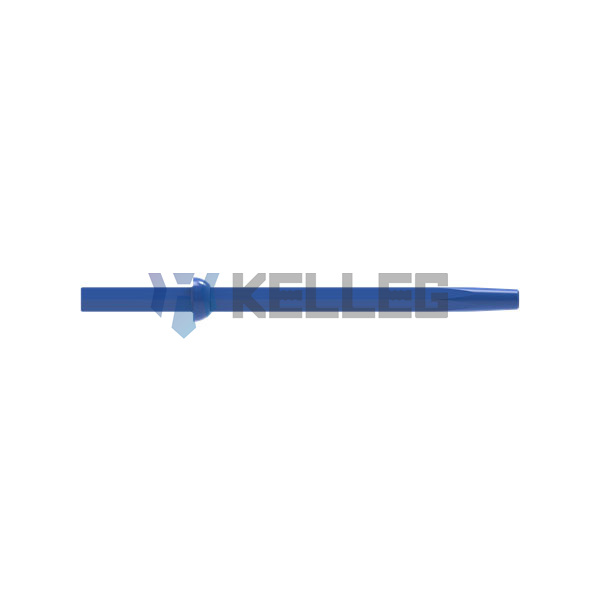2020 官网升级中!现在您访问官网的浏览器设备分辨率宽度低于1280px请使用高分辨率宽度访问。
Rock drilling tools are necessary consumables in basic construction such as mining and tunneling. The slender drill rod has to bear the cyclic stress imposed by a high-frequency, high-impact rock drill under the conditions of severe wear and corrosive media. According to different conditions such as load size and rock hardness, the service life of the drill rod is different, and the main resistance index of the drill rod breaking is the tensile and compressive fatigue strength under stress corrosion conditions. Therefore, to scientifically extend the service life of drill rod, it is necessary to understand the factors affecting the fatigue life of drill rod.

What is fatigue life? Fatigue life is the number of cycles of stress or strain experienced at fatigue failure. Factors affecting the fatigue life of drill rods include material, quality of smelting, the surface quality of drill rods, geometric structure, manufacturing process, and rock drilling conditions.
1. Material
The drill rod works under cyclic stress, which requires high cyclic toughness of steel. Only with good cyclic toughness can ensure the steel have good vibration-damping performance and reduce the expansion speed of the fatigue crack of the rock drill tools. The steel used for drill rods must also have certain corrosion resistance, mainly the corrosion resistance of the atmosphere and mineral water.
2. Smelting quality
Non-metallic inclusions in steel are the source of fatigue cracks, which also destroy the continuity of the matrix and cause stress concentration. The larger the inclusions, the more fatigue strength decreases. The content of gas and non-metallic inclusions in vacuum smelting is much lower than that of ordinary smelting, so its fatigue strength is much higher.
3. The surface quality and geometric structure of the drill rod
①The surface hardness of the drill rod has an influence on the fatigue life and is also an important factor in the surface quality of the drill rod. Another important factor is the surface defects of the drill rod, such as dents, cracks, porosity, decarburization, knife marks, corrosion.
②If the geometric structure of drill rod is unreasonable, or the machining accuracy is poor, it will lead to an increase in fatigue notch sensitivity and reduce the fatigue resistance and rock drilling life of the rock drilling tools.
4. Manufacturing process
①During the forging, the drill rod is prone to overheating and overburning. Such heating defects will seriously damage the bonding between grains, and the strength will be greatly reduced.
②Shank collar or upsetting part surface forging crack and inner hole deformation due to improper design of mold or forging ratio will seriously reduce the fatigue strength of the drill rod.
5. Rock drilling conditions
①Rock is the basic condition in rock drilling. The harder the rock, the higher the compound cyclic stress of the drill rod and the shorter its service life. Generally, the greater power of rock drill, the higher impact frequency and peak value of stress wave of piston, the greater cyclic stress drill rod bears. The drill rod works in corrosive media, which has a great impact for fatigue limit of steel.
②Under the action of water corrosion, the fatigue limit of steel decreases by 1~5 times. This fatigue process under the action of medium corrosion is called stress corrosion fatigue. When drilling, there is 19~39MPA pressure mineral water flushing in the water hole of the drill rod and mineral water corrosion with rock powder outside. When working under acid water corrosion, the drill rod is prone to internal fatigue fracture. When working under neutral or alkaline water corrosion, the drill rod is prone to external fatigue breakage. Therefore, If the mineral water can be prevented from contacting the steel, the service life of drill rod can be greatly improved.
③Improper operation during rock drilling will increase the bending stress of the drill rod.
In summary, the bending and torsional stresses of the drill rod under normal rock drilling conditions are smaller than the peak axial stress. Fatigue fracture caused by axial compressive stress is the main reason for drill rod fracture. Inherent defects of drill rods in steel grades, smelting, rolling, geometry and its parameters, forging, machining, heat treatment, as well as additional bending stress, mechanical wear, acid water corrosion, unfavorable rock drill type and lithology, poor quality drill bits, and incorrect operation will exacerbate this cracking.